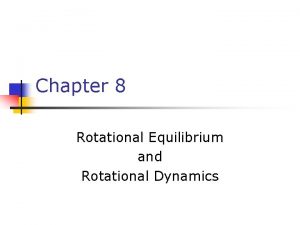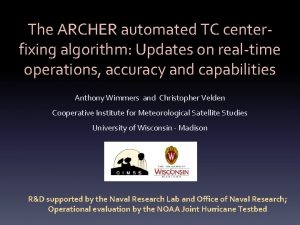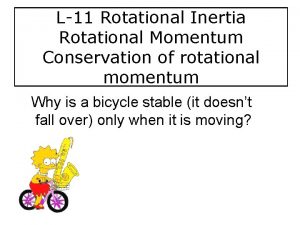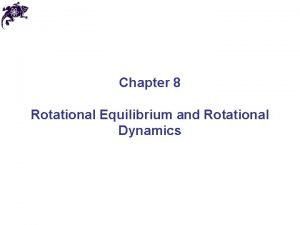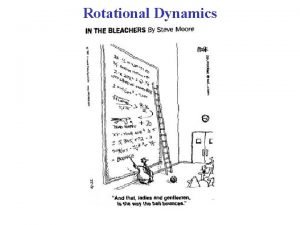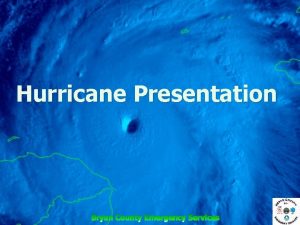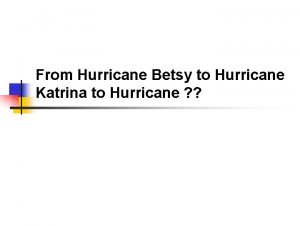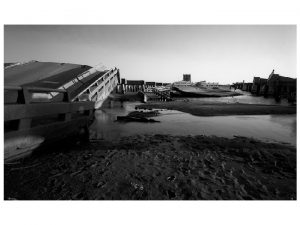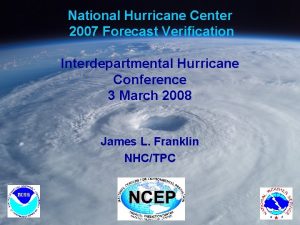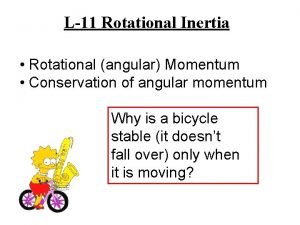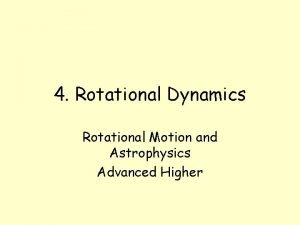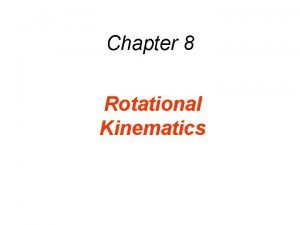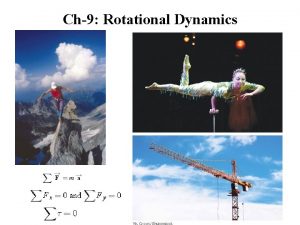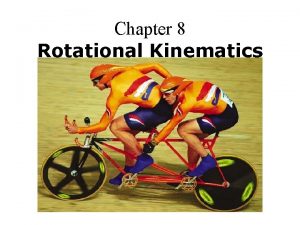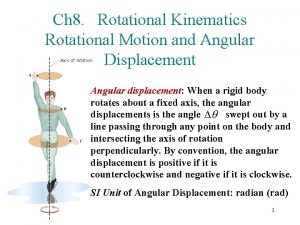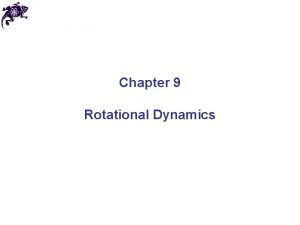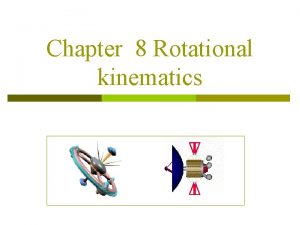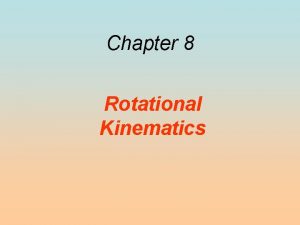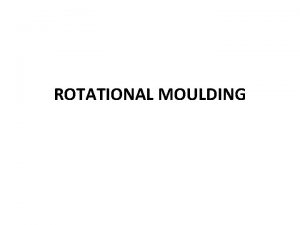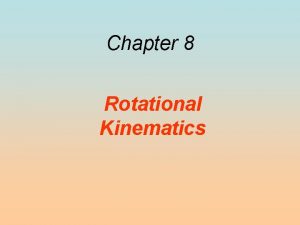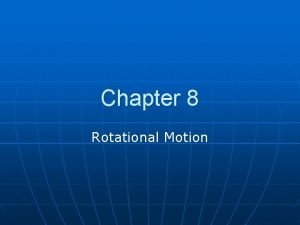Hurricane centerfixing with the Automated Rotational Center Hurricane







































- Slides: 39

Hurricane center-fixing with the Automated Rotational Center Hurricane Eye Retrieval (ARCHER) method Tony Wimmers, Chris Velden University of Wisconsin - Cooperative Institute for Meteorological Satellite Studies (CIMSS) Sponsored by The Oceanography of the Navy through the PEO C 4 I PMW-150 program office and the Naval Research Laboratory

Motivation • Forecasting (track) • Input into automated retrievals (intensity, eye diameter, ERC…) Ø Real time and reanalysis

Objective • Automated, robust location of TC rotational centers in individual microwave or IR images “First guess” Center fix • Must be resilient to false eyes (moats), obstructions in the eye, partial eyes, partial scan coverage • Must rely only loosely on a firstguess (forecast) position estimate • Must apply to microwave and IR imagery 85 GHz (H) TMI retrieval Additional information can be found in Wimmers, A. and C. Velden, 2010: Objectively Determining the Rotational Center of Tropical Cyclones in Passive Microwave Satellite Imagery, J. Appl. Meteor. , 49, 2013– 2034, 2010.

ARCHER overview 1) Produce a 2 D field (contoured) that expresses how well a location registers as the center of the large-scale spiral pattern 2) Produce a separate 2 D field that rates how well a location is centered inside a circular ring of convection “Spiral Score” 3) Combine the two 2 D fields as a weighted sum into a single score field “Ring Score” “Combined Score”

ARCHER: Additional procedures • Images are pre-processed to compensate for a ~12 km parallax shift • If the Combined Score at the center fix does not exceed a certain threshold value, then the algorithm defaults back to the first guess position

Example: Unresolved eye (Dennis 2005) 1) Wider domain

Example: Unresolved eye (Dennis 2005) 2) Zoomed view

Example: Unresolved eye (Dennis 2005) 3) With best track position

Example: Unresolved eye (Dennis 2005) 4) With simulated forecast position (first guess)

Example: Unresolved eye (Dennis 2005) 5) Spiral score

Example: Unresolved eye (Dennis 2005) 6) Ring score

Example: Unresolved eye (Dennis 2005) 7) Combined score

Example: Unresolved eye (Dennis 2005) “First guess” Center fix Best track 8) Compare to best track position

Example: Asymmetric eye (Chaba 2010) Oct 28 04: 40 Z Vmax=115 kts Center-fix 1. Strong, complete eyewall

Example: Asymmetric eye (Chaba 2010) Oct 28 09: 33 Z Vmax=112 kts Center-fix 2. Shearing leads to asymmetric eyewall pattern

Example: Asymmetric eye (Chaba 2010) Oct 28 10: 52 Z Vmax=111 kts Center-fix 3. Eyewall only evident on the western side

Example: Asymmetric eye (Chaba 2010) Oct 28 22: 02 Z Vmax=105 kts Center-fix 4. Sub-pixel eye and banding only on the west

Example: Asymmetric eye (Chaba 2010) Oct 29 07: 56 Z Vmax=90 kts Center-fix 5. Sub-pixel eye and a developing secondary eyewall

Example: Asymmetric eye (Chaba 2010) Oct 29 20: 38 Z Vmax=75 kts Center-fix 6. Completed eyewall replacement cycle

Validation: 2005 season, North Atlantic • Independent from calibration sample • Uses the NHC best track as “truth” • Only uses cases that are < 3 hours from an aircraft position fix

Effect of vertical wind shear • The algorithm performance will degrade in cases of high vertical shear, because of displacement between the centers of rotation at the surface and the image height, and also loss of symmetry • Because of this we separate the test sample into Group A (low/moderate shear) and Group B (high shear) • Group B is <10% of the sample • The ARCHER error for Group B averaged to be about double that of Group A

Results: 85 -92 GHz (H) Group A RMS (w/o defaults) 0. 06 RMS (all) 0. 15 0. 06

Results: 85 -92 GHz (H) Group A RMS (w/o defaults) 0. 06 RMS (all) 0. 15

Results: 85 -92 GHz (H) Group A RMS (w/o defaults) 0. 06 RMS (all) 0. 15 Default rate 37%

Results: 85 -92 GHz (H) Group A RMS (w/o defaults) 0. 06 RMS (all) 0. 15 Default rate 37% Default rate Trop. storm 83% (*) Category 1 15% Category 2 -5 0. 01%

Tropical Storm example Center fix Best track (. 25 away)

ARCHER: Adapting to IR imagery (Low organization) Organization score = 0. 91 Error, degrees (Medium organization) Organization score = 1. 55 Error, degrees • Calibrated and validated to a probability density function (PDF) (High organization) Organization score = 2. 60 Error, degrees

ARCHER: Output for IR imagery • Graphical output: Spiral grid Combined grid Center-fix • Numerical output: Forecast position (lon, lat): -61. 10, 36. 70 Center-fix position (lon, lat): -60. 81, 36. 47 Eye confidence (%) = 31 Error distribution parameter (alpha) = 6. 39 Probability of error < 0. 2° (%) = 36. 5 Probability of error < 0. 4° (%) = 72. 4 Probability of error < 0. 6° (%) = 90. 0 Probability of error < 1. 0° (%) = 98. 8 Often ~95% for more organized TCs

Final remarks Distribution • A free, licensed version of ARCHER is available for distribution (Matlab code). HURSAT • ARCHER does work with HURSAT and yields good results, although the imagery becomes twice-interpolated (once from HURSAT and then again by ARCHER), which means the result can often be improved by using original data. Ongoing work • Current work involves a cross-comparison of ARCHER accuracy for microwave and IR imagery, and also finding the best way of combining microwave/IR results into a single storm track.

ARCHER: Adapting to IR imagery (Low organization) Organization score = 0. 91 Error, degrees (Medium organization) Organization score = 1. 55 Error, degrees • Calibrated and validated to a probability density function (PDF) (High organization) Organization score = 2. 60 Error, degrees

Extras

Forecast position error North Atlantic West Pacific

ARCHER: “Spiral Score” component • High values occur where the vector field lines up with the image gradients

ARCHER: “Spiral Score” component • High values occur where the vector field lines up with the image gradients

Summary • ARCHER has several unique innovations: – Balances the evidence from large-scale spiral edges with small-scale eyewall patterns – Has an optimized default to the first guess as a backup option – Validated with a large, independent sample of images • The center-fix accuracy is ~16 km in all cases with low-to-moderate shear and ~6 km for non-default cases only. • Current applications include TC visualization, TC diameter size retrieval, intensity estimation and prediction of rapid intensification.

Applications (1 of 4): MIMIC • (MIMIC: Morphed Integrated Microwave Imagery at CIMSS) using multi-satellite 85 -92 GHz retrievals. Finding the center of rotation of each image is critical to blending them together properly.

Applications (2 of 4): Microwave-based Intensity est. Diagnostic image for TC 26 W (2009), leading to a MW-ADT estimate of Vmax = 73 kts. JTWC estimate was at 65 kts. [24 Nov 1052 UTC] • Eye and eyewall statistics in 85 GHz images add important TC intensity information to the MW-ADT at CIMSS in the 65 -90 kt range, when eyes are often obscured by central dense overcast

Applications (3 of 4): TC diameter information • ARCHER RMW is significantly lower than the value produced by JT. A lower RMW would contribute to a better SATCON (Satellite Consensus) estimate for this TC, indicating that it is probably more accurate (see Herndon and Velden: SATCON Evaluation and Recent changes, Poster 33).

Applications (4 of 4): Rapid intensification • Certain characteristics of the eyewall in 37 GHz imagery can indicate rapid intensification, but previously this has only been shown manually*. • The ARCHER algorithm can automate this method by identifying the eye and eyewall • This is described in the talk, Improvements in the Statistical Prediction of TC Rapid Intensification [Rozoff et al. Thursday am session] * Kieper (2008; 28 th AMS Conf. on Hurr. and Trop. Meteor. )
 Rotational equilibrium example problems
Rotational equilibrium example problems Rotational equilibrium and rotational dynamics
Rotational equilibrium and rotational dynamics đại từ thay thế
đại từ thay thế ưu thế lai là gì
ưu thế lai là gì Thế nào là hệ số cao nhất
Thế nào là hệ số cao nhất Vẽ hình chiếu vuông góc của vật thể sau
Vẽ hình chiếu vuông góc của vật thể sau Tư thế ngồi viết
Tư thế ngồi viết Frameset trong html5
Frameset trong html5 101012 bằng
101012 bằng Từ ngữ thể hiện lòng nhân hậu
Từ ngữ thể hiện lòng nhân hậu Mật thư tọa độ 5x5
Mật thư tọa độ 5x5 Vẽ hình chiếu đứng bằng cạnh của vật thể
Vẽ hình chiếu đứng bằng cạnh của vật thể Tư thế ngồi viết
Tư thế ngồi viết Thang điểm glasgow
Thang điểm glasgow Quá trình desamine hóa có thể tạo ra
Quá trình desamine hóa có thể tạo ra Sự nuôi và dạy con của hươu
Sự nuôi và dạy con của hươu Các châu lục và đại dương trên thế giới
Các châu lục và đại dương trên thế giới Thế nào là sự mỏi cơ
Thế nào là sự mỏi cơ Diễn thế sinh thái là
Diễn thế sinh thái là Bổ thể
Bổ thể Phản ứng thế ankan
Phản ứng thế ankan Thế nào là mạng điện lắp đặt kiểu nổi
Thế nào là mạng điện lắp đặt kiểu nổi Alleluia hat len nguoi oi
Alleluia hat len nguoi oi Phối cảnh
Phối cảnh Lời thề hippocrates
Lời thề hippocrates Một số thể thơ truyền thống
Một số thể thơ truyền thống Khi nào hổ con có thể sống độc lập
Khi nào hổ con có thể sống độc lập Công thức tính độ biến thiên đông lượng
Công thức tính độ biến thiên đông lượng đặc điểm cơ thể của người tối cổ
đặc điểm cơ thể của người tối cổ Dot
Dot Tỉ lệ cơ thể trẻ em
Tỉ lệ cơ thể trẻ em Các châu lục và đại dương trên thế giới
Các châu lục và đại dương trên thế giới Môn thể thao bắt đầu bằng chữ f
Môn thể thao bắt đầu bằng chữ f Thẻ vin
Thẻ vin Thiếu nhi thế giới liên hoan
Thiếu nhi thế giới liên hoan Hát kết hợp bộ gõ cơ thể
Hát kết hợp bộ gõ cơ thể Cái miệng bé xinh thế chỉ nói điều hay thôi
Cái miệng bé xinh thế chỉ nói điều hay thôi điện thế nghỉ
điện thế nghỉ Hệ hô hấp
Hệ hô hấp Trời xanh đây là của chúng ta thể thơ
Trời xanh đây là của chúng ta thể thơ
